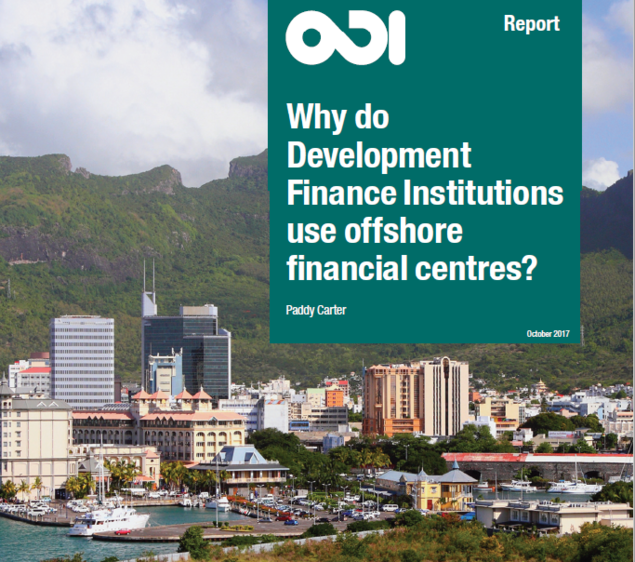In this report, developed by the Overseas Development Institute (ODI), explains and evaluates why DFIs use offshore financial centers (OFCs) and recommends how this best should be done in the future.

Development Finance Institutions (DFIs) invest public money in private enterprises, with the aim of accelerating the economic development of low- and middle-income countries. One of the greatest threats to development is popularly perceived to be the network of tax havens that drain billions from developing countries. Fostering responsible tax behaviour and transparency are high international priorities. And yet, Norfund and the other DFIs regularly route some of their investments through tax havens. Why?
This is what this recent ODI report seeks to examine. The short answer is that DFIs use intermediary jurisdictions not to avoid tax, but to make up for shortcomings in the legal systems of the poorest and most capital-scarce countries that would otherwise dissuade private investors from entering these markets. However, the longer answer involves more analysis and reflections.
The use of OFCs should be seen in this way: it might be better if OFCs were not necessary, but they often are. Rather than prohibiting the use of OFCs, the focus should be on moving things in a better direction.
Paddy Carter
The European DFIs (EDFIs) seek to foster responsible investment practices and seek to lead by example, also when it comes to responsible tax. An EDFI Task Force on responsible tax in developing countries has therefore completed a consultation draft of six new EDFI responsible tax principles and a related background paper. These principles are now open for consultation up to the end of November.
The goal is then to finalize the principles by the end of this year. The documents are to be found under links on the left hand side.